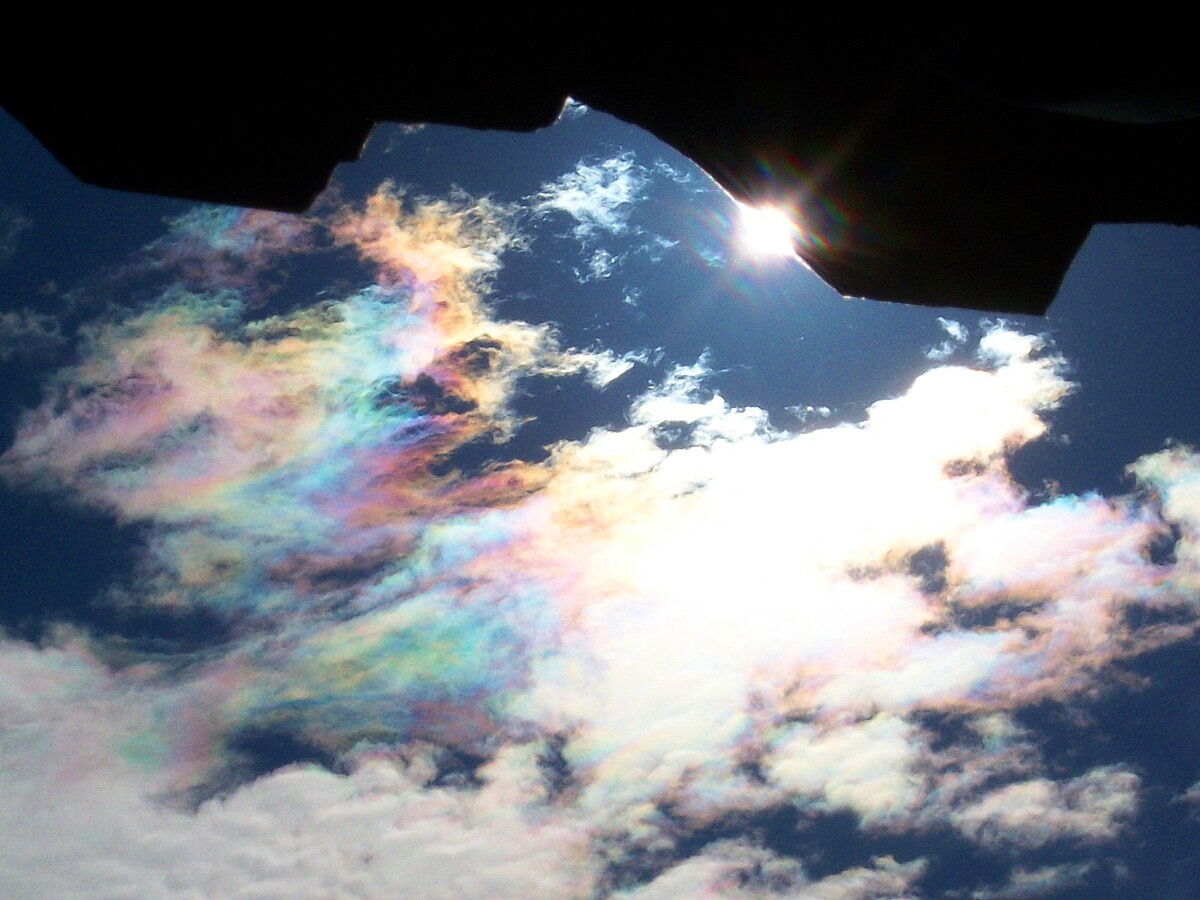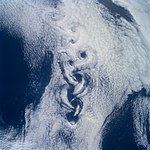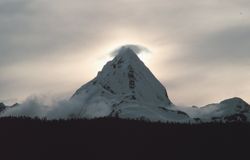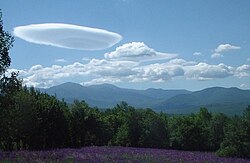You are using an out of date browser. It may not display this or other websites correctly.
You should upgrade or use an alternative browser.
You should upgrade or use an alternative browser.
STRANGE CLOUDS
- Thread starter Juba
- Start date
Pareidolia in skies over Turtle Island, South Carolina, #US (January 2023). #Angel #Cloud #Iridescent #Clouds #Zabedrosky #Heavens #Phenomenon
By: Author unknown via Anthony Costello
Cumulonimbus arcus, seen today at Ezeiza International Airport, Buenos Aires, #Argentina.
By: Author unknown via Anthony Costello
Cumulonimbus arcus, seen today at Ezeiza International Airport, Buenos Aires, #Argentina.
Photos and videos of strange clouds in late January and early February.
The two lats ones evoke the tube of a vacuum cleaner coming from above. Weird!Photos and videos of strange clouds in late January and early February.
The two lats ones evoke the tube of a vacuum cleaner coming from above. Weird!
Wow.
Nobody will tell me the "vacuum bottom" part is not artificial made. The lines are too symmetrical and clean to be just incidental cloud formation.
According to the tweet this cloud appeared a couple of months ago in Jantzen Beach, Portland.
In a Danish tabloid, Ekstrabladet, they published in their science column on February 11, 2023:
Beautiful and rare phenomenon over the Arctic
Very rare 'rainbow clouds' recently put on a spectacular show at the Arctic Circle

The beautiful colors in the sky were captured by an amateur photographer in Iceland on January 25, 2023. (Photo: Jónína Guðrún Óskarsdóttir)
By Videnskab.dk
Recently, it was possible to experience a truly unique show in the sky at the northern arctic circle, when the clouds suddenly glowed in many different colors.
What might at first glance be thought to be aurora borealis actually turned out to be a very rare cloud phenomenon called 'polar stratospheric clouds'.
It is a phenomenon that can occur when clouds of tiny ice crystals float higher into the atmosphere than is normally possible. When sunshine hits the clouds, the light is scattered and it shows up as beautiful colors.
This is what Live Science writes according to Videnskab.dk.
In order for the phenomenon to take place, it requires the lower stratosphere to reach temperatures below -81 degrees Celsius.
Normally, clouds can't form in the stratosphere because it's too dry, but when temperatures are low enough, water molecules that are otherwise far apart can start to aggregate into tiny ice crystals and—in a larger perspective—clouds.
Therefore, polar stratospheric clouds can occur 15-25 kilometers above the Earth's surface, which is much higher than normal clouds.
There are two varieties of polar stratospheric clouds. One variant has some less spectacular colors and consists of a mixture of ice crystals and nitric acid.

Also in Norway, an amateur photographer managed to get a picture of the rare phenomenon. The photo was taken near Tromsø on 23 January 2023. (Photo: Fredrik Broms)
The other variant, on the other hand, gives a completely unique color show, consists entirely of ice crystals and only takes place approximately once or twice a year in the Arctic.
It was variant number two that took place recently at the Arctic Circle, which has not been difficult to mistake if you look at the two photographs.
Strange cloud over Argentina. They said it has the same shape of Turkey's cloud
This is how the sky was observed in Coronel Suarez Buenos Aires, Argentina.
Via Argentina and World Meteorology
Via Argentina and World Meteorology
Impressive sunset with mastodon clouds over San Luis Capital, #Argentina (15.02.2023). #Amazing #Clouds #Sunset #Sunset #Pordosol #zabedrosky #Strange #Clouds #Mammatus
Lenticular cloud inside Iquique, #Chile (feb.18.2023). #Clouds #ovni #zabedrosky #Cloud #Lenticulars
By: Juan Eduardo Sanchez ✓.
By: Juan Eduardo Sanchez ✓.
Lenticular Clouds over Khalkhal, #Iran (20.02.2023). #Lenticular #Clouds #zabedrosky #Cloud
Storm arriving in Santos, São Paulo, #Brazil (15.02.2023). #Storm
Storm arriving in Santos, São Paulo, #Brazil (15.02.2023). #Storm
Seeing these lenticular clouds in Iran, a question poped up in my mind: Could lenticular clouds be connected with earthquakes (to come)? Searching, I found this paper, published in 2022 in the Frontiers in Earth Science journal:Lenticular Clouds over Khalkhal, #Iran (20.02.2023). #Lenticular #Clouds #zabedrosky #Cloud
On the Relation Between Anomalous Clouds and Earthquakes in Italian Land
In 1997 Russian scientist Morozova found some cloud anomalies possibly related to active fault systems and earthquakes. Now, 24 years later, the correlation between clouds and earthquakes is still controversial, and in this paper we checked systematically the satellite images in Italy from 2010 to 2013. The correlation between earthquakes and cloud anomalies was statistically examined by assuming different various leading times and magnitudes. The result showed that when the leading time interval was set to 23≤ΔT≤45 days and the magnitude is bigger than or equal to M4.7, 70% of earthquakes were preceded by cloud anomalies. Poisson random test showed that anomaly appearance rate (AAR) and earthquake occurrence rate (EOR) was much higher than those derived in a random situation, which means it is nearly impossible to deny the correlation between cloud anomaly and land earthquakes in Italy. Error matrix analysis showed this method provides 75% overall accuracy for the 52 total cases. Analysis also showed that cloud method provides a very high AAR value and similar EOR value compared with other earthquake prediction methods based on ionospheric or skin temperature data. The physical mechanism of cloud anomaly was likely caused by electric field, which linked active fault, atmosphere circuit conduction current, and cloud anomaly, and thus provides a reasonable hypothesis of cloud anomaly.
[...]
Preseismic clouds could be mixed with orographic clouds. Someone may consider that when water vapor travels from sea to Italy land area, it climbs up the mountains and the clouds form when the temperature decreases. Satellite data show that the altitude of preseismic clouds is about 10,000 m, while the Italy Appenin mountains are just about 2000 m high (for example, the highest Appenin Mount is 2,492 m). If the water vapor climbs up the mountains from sea surface to 2000 m, then it cannot rush to an altitude of about 10,000 m. So a new physical mechanism needs to be involved, and the seismic source could be one.
Basic formation of an orographic cloud:
And among the orographic clouds, one find the lenticular clouds. According to Wikipédia (in French which have more datas than the English one), there are upstream clouds and wave clouds:
Wave clouds form on the crests of the orographic wave. Waves can exist at several altitudes if the air is sufficiently humid and the mountain tops are variable. Three types of clouds are generally associated with this phenomenon:
- lenticular cloud, a stationary cloud at the top downwind of the obstacle that takes the shape of a saucer or lens. This kind of cloud takes an axis perpendicular to the wind direction ;
- Hooded top cloud, a type of lenticular cloud whose base is below the top of the obstacle and thus forms a kind of hat around it.
- Alley of Karman vortices.
Parallel lines following the crest of an orographic wave in southern Algeria | Alley of Karman eddies off Rishiri Island in Japan | Summit cloud observed in Alaska | Lenticular cloud over Mount Washington, New Hampshire, USA |
And from Wikipdia (English):
What are earthquake clouds?
Earthquake clouds are clouds claimed to be signs of imminent earthquakes. They have been described in antiquity: In chapter 32 of his work Brihat Samhita, Indian scholar Varahamihira (505–587) discussed a number of signs warning of earthquakes, including extraordinary clouds occurring a week before the earthquake.
More about "Brihat Samhita, Indian scholar Varahamihira (505–587)" in the following article (from which I cannot copy/paste here):
A temblor from ancient Indian treasure trove?
@MK Scarlett how interesting
The SSGEOS researcher calls this atmospheric fluctuations. Yes, there is possibly a connection. On the 19th a lenticular cloud was seen in Chile.
And today off shore the coast of Chile.
SSGEOS hypothesizes that when an atmospheric fluctuation is recorded there is a period of 1-5 days within which a seismic event could occur.
The physical mechanism of cloud anomaly was likely caused by electric field, which linked active fault, atmosphere circuit conduction current, and cloud anomaly, and thus provides a reasonable hypothesis of cloud anomaly.
The SSGEOS researcher calls this atmospheric fluctuations. Yes, there is possibly a connection. On the 19th a lenticular cloud was seen in Chile.
Lenticular cloud inside Iquique, #Chile (feb.18.2023). #
And today off shore the coast of Chile.
M 5.5 - 151 km WSW of San Antonio, Chile
2023-02-23 10:23:38 (UTC)
33.924°S 73.200°W. 26.8 km depth
USGS earthquake alert
SSGEOS hypothesizes that when an atmospheric fluctuation is recorded there is a period of 1-5 days within which a seismic event could occur.
dianabeckwith
A Disturbance in the Force
strange clouds have been see in Turkiye before the earthquake
Trending content
-
-
-
-
Thread 'Coronavirus Pandemic: Apocalypse Now! Or exaggerated scare story?'
- wanderingthomas
Replies: 30K




